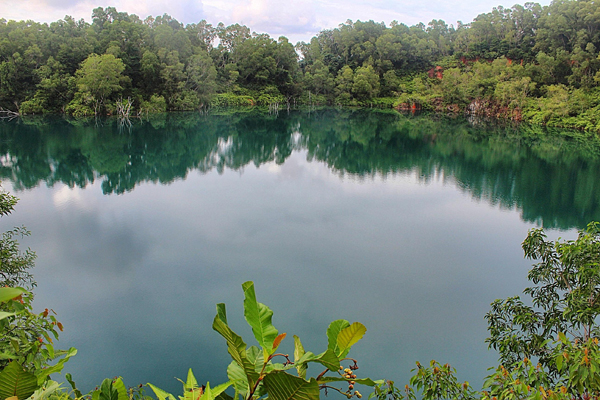What is Open Water Swimming?

An abandoned quarry at Pulau Ubin. Some groups have been known to swim in this quarry, particularly those from the Outward Bound School (OBS).
By Sophia Seen
Is Open Water Swimming Safe?
Open water swimming may seem like a novel idea for the adventurous or those simply bored of routine public swimming pools. This article would serve to give you a brief overview on what open water swimming is, comparing it to swimming done in a regular pool.
What is Open Water Swimming?
Open water swimming as its name implies refers to outdoor swimming in bodies of water such as oceans or lakes. The environment of a swimming pool is often very controlled. For example, the water is chlorinated to ensure cleanliness and the swimming area and lanes are often clearly demarcated.
All these are absent in open water swimming. In contrast to swimming in a pool, you will be subjected to various elements of nature such as waves and coastal undercurrents. Therefore, extreme care must be taken when swimming in open water to ensure your safety.
Lifeguards: Open water swimming vs swimming pools
In addition, most swimming pools would have lifeguards on duty to ensure the safety of swimmers. On the other hand, lifeguards may not be present at beaches or other open water bodies.
Even when lifeguards are present, the time taken for them to get to you is far longer at the beach as you would be further away from them as compared to a confined swimming pool.
In Singapore, lifeguards are present at Sentosa beaches but not at other public beaches. Therefore, it is extremely important to be mindful of your safety when swimming in open waters. It's a good habit to be vigilant too, to help keep a lookout for those around you.
Conditions: Open water swimming vs swimming pools
Lane ropes in swimming pools help calm the water when needed and can be held on to for support. These are not present in open water bodies. Moreover, the water in oceans are rougher with varying waves and tide. Swimming in open waters tends to be more tiring as well as there are no walls for you to rest on.
In addition, sighting (often done before breathing) is essential in open water swimming and you must be more aware of your surroundings. You are less certain in open waters as compared to when swimming in a pool with a controlled environment.
To ensure safety when engaging in open water swimming, it is necessary to have intermediate competency in swimming. Avoid open swimming alone and ensure that someone is watching out for you in case of emergency.
The dangers of swimming at abandoned quarries
While we are on the topic of open water swimming, I would also like to point the dangers of swimming at abandoned quarries. The waters at the abandoned quarries at Pulau Ubin may appear very tempting to swim in because of their turquoise waters. These quarries are actually extremely dangerous and swimming at them should be strictly avoided.
These waters can be extremely deep and cold due to deep drilling. There is no visibility of discarded submerged objects and water quality could be toxic and full of industrial pollution.
Although open water swimming may present a different swimming experience, much greater caution needs to be taken and it is not for beginner swimmers.
To receive the latest updates on the happenings in the Singapore sports scene, or to find out more about some of the latest programmes on offer at ActiveSG, like our Facebook page here.




![ActiveSG Academies and Clubs Logo (Solid Colour)[8647]](https://www.activesgcircle.gov.sg/hs-fs/hubfs/ActiveSG%20Circle%202023Theme/images/ActiveSG%20Academies%20and%20Clubs%20Logo%20(Solid%20Colour)%5B8647%5D.png?width=150&height=65&name=ActiveSG%20Academies%20and%20Clubs%20Logo%20(Solid%20Colour)%5B8647%5D.png)



-01.png?width=200&height=141&name=Team%20Singapore%20Logo%20(Red)-01.png)



